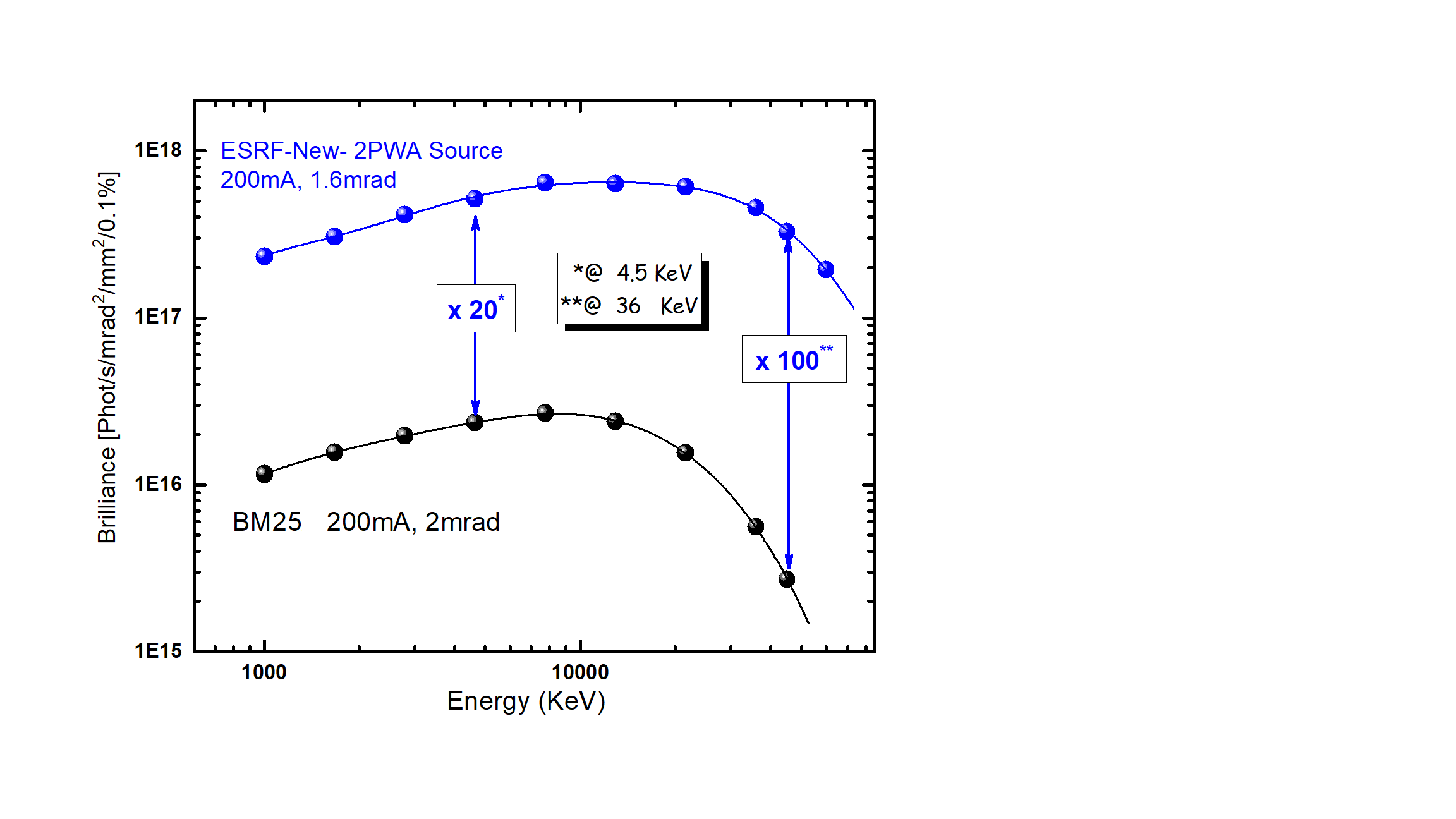Source Characteristics
Source characteristics
After 20 years of success and scientific excellence, the ESRF has launched an ambitious upgrade project with the aim of maintaining a high level of competitiveness on synchrotron radiation science and technology. The upgrade includes the development of new state-of-the-art beamlines and the construction and commissioning of a revolutionary storage ring –EBS, Extremely Brilliant Source- with performances multiplied by 100 in terms of brilliance and coherence. This new source of synchrotron radiation will offer unique possibilities for the exploration of matter and for the understanding of life at the macromolecular level.
The spanish CRG BM25 beamline SpLine is situated on the port D25 of the ESRF storage ring (see Accelerator and source). The new Extremely Brilliant Source (ESRF – EBS) lattice is based on an innovative hybrid multi-bend achromat (HMBA) design, with a completely different –than before- array of magnets. In the case of the bending magnet beamlines, as it is the case of BM25, the long bending magnet has beeb replaced by a short wiggler. Four different short wiggler sources are at the disposal of BM beamlines: i) DQ2C @ 0.4 T or DQ1D @ 0.57 T (DQ means Dipole-Quadrupole); ii) Short Bending Magnet (SBM); 2 Pole Wiggler (2PW); and 3 Pole Wiggler (3PW).
In our case, we have evaluated the photon flux, beam size and divergence on the sample position and beam angular deviation for the different sources based on X-ray tracing calculations performed with the Shadow software. The 2-Pole Wiggler in configuration A (2PWA) provided the best performances (source parameters resumed in Table 1).
Although some contamination from the side DQ2C device will be present, at the focus point, a photon flux and Brilliance increase of a factor 2-3 and 20-100, respectively is expected (See figure 2). Furthermore, the new 2PWA source beam path moves away from the ring tunnel wall increasing the free space especially around the experimental set-up. The 2PWA choice is also based on the fact that it is envisaged that the Short Wiggler could be replaced in the future with a wiggler/undulator of higher magnetic field or higher number of poles as well as a variable gap. Such a modification, which can be implemented once the operation of the new machine is well established, will enhance even more the beamline performances by incrementing furthermore the flux and brilliance of the X-ray beam.
|
|
|
2PWA |
|
Magnetic field |
[T] |
0.856 |
|
Horiz. Beta function |
[m] |
1.8 |
|
Horiz. dispersion |
[m] |
0.018 |
|
Horiz. rms e-beam size |
[mm] |
23 |
|
Horiz. rms e-divergence |
[mrad] |
24 |
|
Vert. beta function |
[m] |
2.57 |
|
Vert. rms e-beam size |
[mm] |
3.6 |
|
Vert. rms e-divergence |
[mrad] |
3 |
Table I: source characteristics
Figure 2 shows the brightness generated by each source point (soft edge and hard edge) from the bending magnet as a function of energy and figure 6 shows the corresponding brilliance functions.

Figure 2: Brightness of the 2PAW BM25 source in comparison with old BM source



